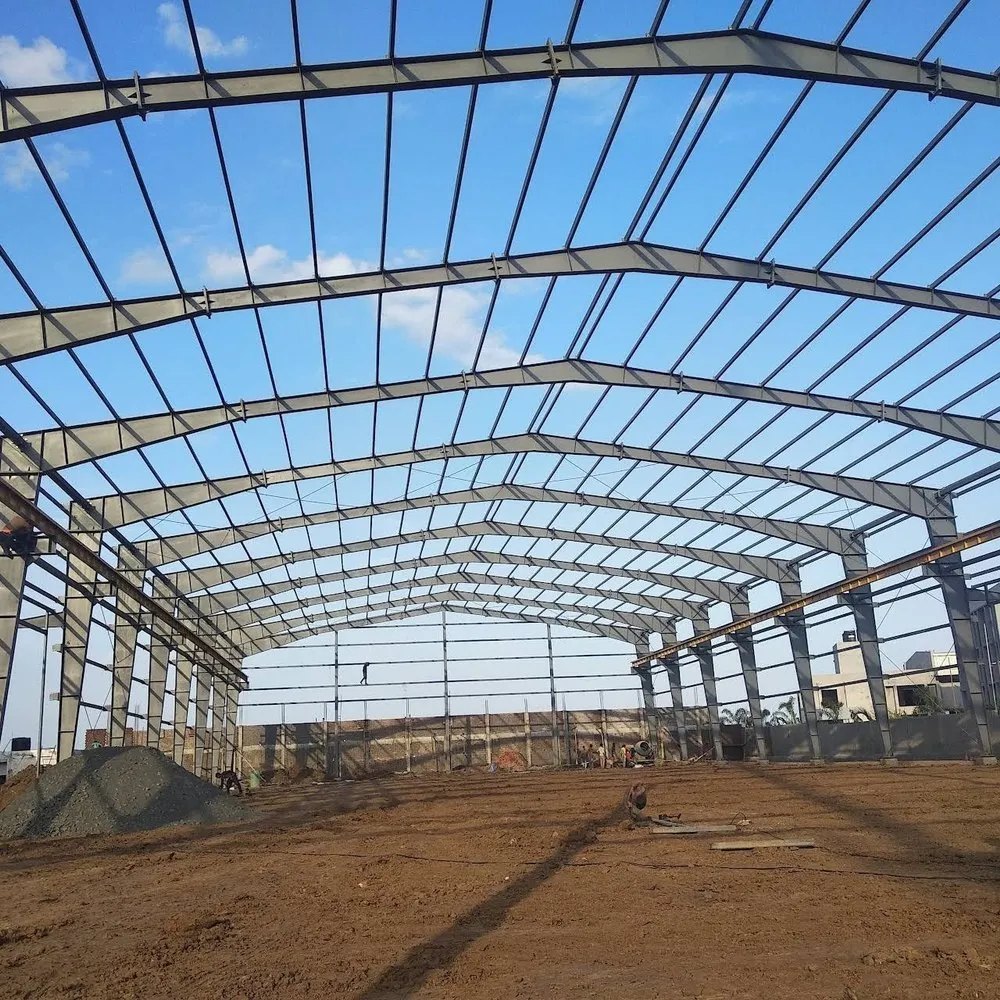
Wastewater Facility Designed for Fast-Growing Region
Charlotte Water is constructing a $650-million advanced wastewater treatment facility to treat water from across a fast-growing region of nearly 3 million people by partnering with neighboring towns and delivering a project that can be readily expanded. The Stowe Regional Water Resource Recovery Facility, an umbrella name covering multiple related projects, will be able to treat 15 million gallons per day when it opens in 2027—but it is positioned and designed to grow to 25 mgd when the time comes.
“We had to look at the capacity of our other plants,” says Nicole Bartlett, engineering division manager and Stowe project manager for Charlotte Water.
She sees Stowe as a “family of projects” with the goal to build a new wastewater treatment facility to serve Mecklenburg County as well as Mount Holly and Belmont in eastern Gaston County.

Two 9-million-gallon equalization basins bring the facility’s total storage to 29 million gallons.
Photo courtesy Charlotte Water
That group of projects—the largest in Charlotte Water history and the utility’s first new construction in nearly 40 years—is being built by a virtual family of contractors. HDR is the owner’s adviser for the overall effort, and it also served as engineer for the Stowe access project that completed a $16-million access road and bridge in early 2024.
CDM Smith is building the $42-million Stowe solids handling project, which includes solids holding facilities and dual 10-in. force mains, all set to finish in the first half of 2027. GHD is building a $76-million project that includes a pump station at the Belmont facility and dual 30-in. force mains underneath the Catawba River and a 24-in. force main from there to Charlotte Water’s Paw Creek pump station, all with a completion target of third quarter 2028.
The $301-million regional water resource recovery facility being built by a Crowder Construction-Garney Construction joint venture is the heart of the effort, accounting for nearly half of the total project cost and set to complete at the end of 2027.
Charlotte Water now has five major wastewater treatment plants, a total capacity of 123 mgd, 82 pump stations and 4,330 miles of sewer mains serving all or portions of six counties. The main facility will connect to and collect wastewater from treatment plants owned by the cities of Mount Holly and Belmont on the other side of the river. That main facility will be decommissioned once Stowe comes online.

About half of the 50,000 cu yd of concrete required for the project have been placed to date.
Photo courtesy Charlotte Water
Building for Growth
Bartlett describes Stowe as “a greenfield project being built on a brownfield site.”
Just north of the project site is the location of a former private industrial facility and past area polluter. Purchasing the land from that industrial owner, Charlotte Water wanted it classified as a brownfield because if any contaminants were found on the property in the future, it would be Charlotte Water on the hook for the cleanup, she says.
That led to an environmental management plan that carries testing requirements, limits on where onsite stone can and cannot be quarried and restrictions on excess dirt leaving the site.
“This will be good for Charlotte, for Gaston County and for the environment as a whole.”
—Doug Shoutd, Plant Supervisor, Stowe Regional WRRF
That’s not the only headache sparked by the site. Most of the Stowe Regional project is located on a peninsula in the river, and the side not surrounded by water is private property. That left the city to construct its own driveway and bridge for access, with the team also able to place seven pipes under the span.
Laying those pipes under the creek instead would have cost at least $1 million each, Bartlett says, noting not only savings on capital costs, but also easier long-term maintenance via quick access from the bridge.
Connecting the Stowe facility with the Mount Holly plant required horizontal directional drilling to install two force mains under the river and a nearby creek. A similar plan for the Belmont facility, still in design, will use two 30-in. wastewater pipelines connecting to a separate lift station before sewage is pumped to the Stowe facility.
Doug Shoutd, plant supervisor for the Stowe facility, had the unique experience of seeing the drilling from both sides of the river—as former manager of the Mount Holly facility. Overall, drilling took about nine months, he says, starting in early 2022. The pipes pass below Long Creek near the Stowe site at a depth of 75 ft, and run under the Catawba River at a depth of 65 ft. The entire length is roughly 3,100 ft, with the two drills meeting in the middle and having just a 1.5-in. offset, Shoutd says, adding that horizontal directional drilling was the most cost-effective and least intrusive option.

The facility’s two-story administrative building will be LEED-certified. It will include parking spots for electric vehicle charging, and the water used by the building will be recycled.
Photo courtesy Charlotte Water
The star of the Stowe project is its five-stage biological nutrient removal basin, an advanced system that uses densified activated sludge technology to form dense sludge granules that settle faster and increase efficiency, according to Charlotte Water. The process reduces infrastructure costs as well as energy and chemical needs compared with more traditional systems.
Two 9-million-gallon basin cells have been completed at the Long Creek Pump Station portion of the project, constructed with 4,070 cu yd of concrete. By November 2024, the project had excavated more than 500,000 cu yd of soil, placed 30,000-plus cu yd of concrete, installed more than 9.1 million lb of rebar and installed more than 15,000 linear ft of pipe.
Other vertical construction on the project includes a maintenance building and two-story administration building being constructed to LEED standards and oriented for solar efficiency and designed for public use and as a training and conference center.
“I worked on the Mount Holly side and worked in and ran that older plant,” says Shoutd. “This will be good for Charlotte, for Gaston County and for the environment as a whole.”

The project installed multiple force mains via horizontal directional drilling.
Photo courtesy Charlotte Water
Teamwork Makes the Treatment Work
According to Bartlett, “When you do a project of this magnitude, it can be a challenge to ensure that we stay on budget and on schedule, [and] that we’re communicating with all team members.”
Close coordination with design-builders, who provide updates on cost, including when the project has gone outside the balance of the budget, has spurred value engineering and helped keep work on track.
Will Shull, HDR associate vice president, says coordination meetings between teams are critical, with planning already underway for plant commissioning about 18 months away. Another wrinkle ironed out by close coordination has been COVID-related cost escalation for materials. The progressive design-build approach allowed for an early work package of materials.
“We were able to go ahead and purchase certain equipment—pipes and some electrical gear—and lock in those prices early to get ahead.”
—Will Shull, Associate Vice President, HDR
“We were able to go ahead and purchase certain equipment—pipes and some electrical gear—and lock in those prices early to get ahead,” Shull says, noting that those price increases were snowballing exponentially.
The Crowder-Garney regional water resource reclamation facility and several other projects are using progressive design-build delivery. But others under the Stowe umbrella will be delivered using design-bid-build, including the Stowe handling project by CDM Smith and PC Construction; the Belmont pump station and force main by GHD; and the Stowe access project by HDR and Blythe Construction.
Charlotte Water had to team with its neighboring municipalities as well, thanks to a 30-year-old state limit on discharges into the river, says Bartlett. She notes that in 1995, the state established a total maximum daily load (TMDL) cap for point source permits for nitrogen and phosphorous discharges into the Catawba River. When subsequent studies by Charlotte Water determined the need for a wastewater treatment facility at the Stowe location due to population growth, the TMDL meant they could not set a new wastewater discharge limit.
With that, Charlotte reached out to Belmont and Mount Holly, on the opposite bank of the Catawba, to gauge their interest in joining the city and closing their individual wastewater treatment facilities, Bartlett explains.
“Charlotte Water would take their flow, and in return, those cities would give us … all of their permit allocation, including nitrogen and phosphorous,” she says. Initially there was some hesitation with the municipalities wondering if they were giving up some kind of control they would rather keep. But after further exploration, they saw the benefits, Bartlett says.

The facility administrative building will have a community space for public meetings, workshops and events.
Photo courtesy Charlotte Water
The move allows Charlotte to construct a plant on the river under a plan to serve the needs of all three entities, as Belmont and Mount Holly weighed costly upgrades and expansions to their facilities. The two cities will become a single customer of Charlotte Water, which will eventually take and treat their discharge at the Stowe facility. Belmont and Mount Holly will decommission their respective plants. The move also minimizes wastewater pumping and reduces the overall carbon footprint.
The agreement with Mount Holly was reached in 2018, and with Belmont in 2019. Predesign and permitting kicked off in 2020, and construction began in 2022 on Stowe. Bartlett says the new project extends the life of Charlotte Water’s other major facilities and included the utility’s largest public outreach in her 20-year industry career. The effort included virtual public meetings during the COVID-19 pandemic, aggressive social media regimens, developing a detailed project website with videos and organizing mailers and outreach at community events, including at nearby Whitewater Middle School. That’s especially rewarding in this case, Bartlett says, since Whitewater is an E-STEM (environmental, science, technology, engineering and math) magnet school. “We’re excited to be a part of that,” she says, noting that the Stowe facility will be part of the school’s curriculum. “We’ve talked at career days about the project, and the contractors on the job have come with us.”
Post a Comment
You must be logged in to post a comment.





